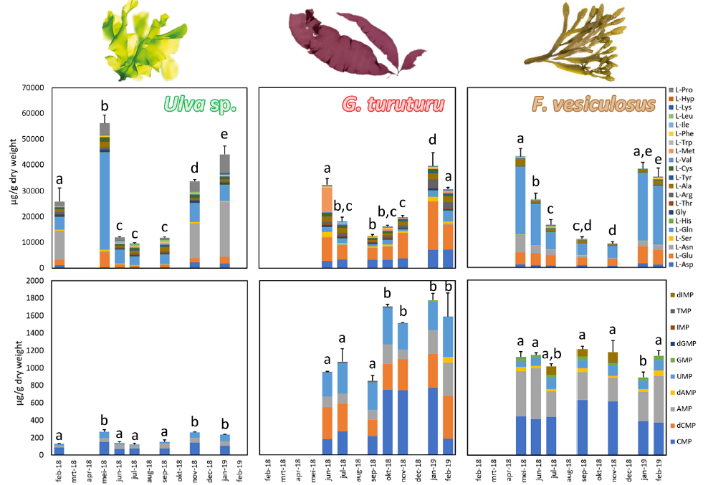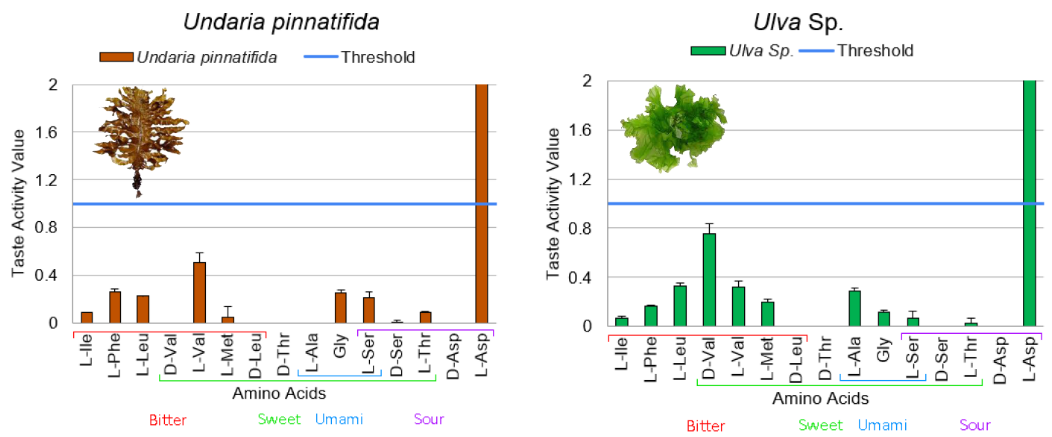General What gives algae their taste?
Everything we did in the ValgOrize project leads up to making way for a sustainable, economically stable and thriving algae food industry in Europe. How do we make consumers eat algae? Make them taste good.
Before we can influence and test it... what IS flavour?
What gives algae their flavours? Let's start with some terminology:
Taste = salt, sweet, sour, bitter & umami (=5th (seafood) taste. Related to specific free amino acids, glutamate, aspartate and 5'-nuceloties (IMP, GMP, AMP))
Aroma = desired odour (mainly attributed to volatiles)
What gives algae their taste?
Profiling free amino acids & nucleotides over time

Free amino acids show a dinstinct seasonal pattern, and show similar patterns regardless of species. Free nucleotides show less variation, and patterns are species-specific.
Translation to umami intensity

Breaking down macroalgae taste profile:
refining the taste of the macroalgae by analyzing D- and L- free amino acids.

Breaking down microalgae taste profile:
refining the taste of the microalgae by analyzing D- and L- free amino acids.

Some conclusions from our project
(but please read more in the linked article!):
- Umami taste (very prominent in algae species) is complex: various components are involved, e.g. D and L amino acids and nucleotides (although D amin acids were not detected in microalgae)
- The umami intensity of a given seaweed species in open sea is dependent on the harvest time
- The umami intensity of a given seaweed species in tanks or reactors is dependent on cultivation conditions
- Umami intensity can be further modulated by drying the seaweed at different temperatures and by the impact of wet storage of the algae
- Seaweed farmers need to be aware of the flexibility of the taste of their products
